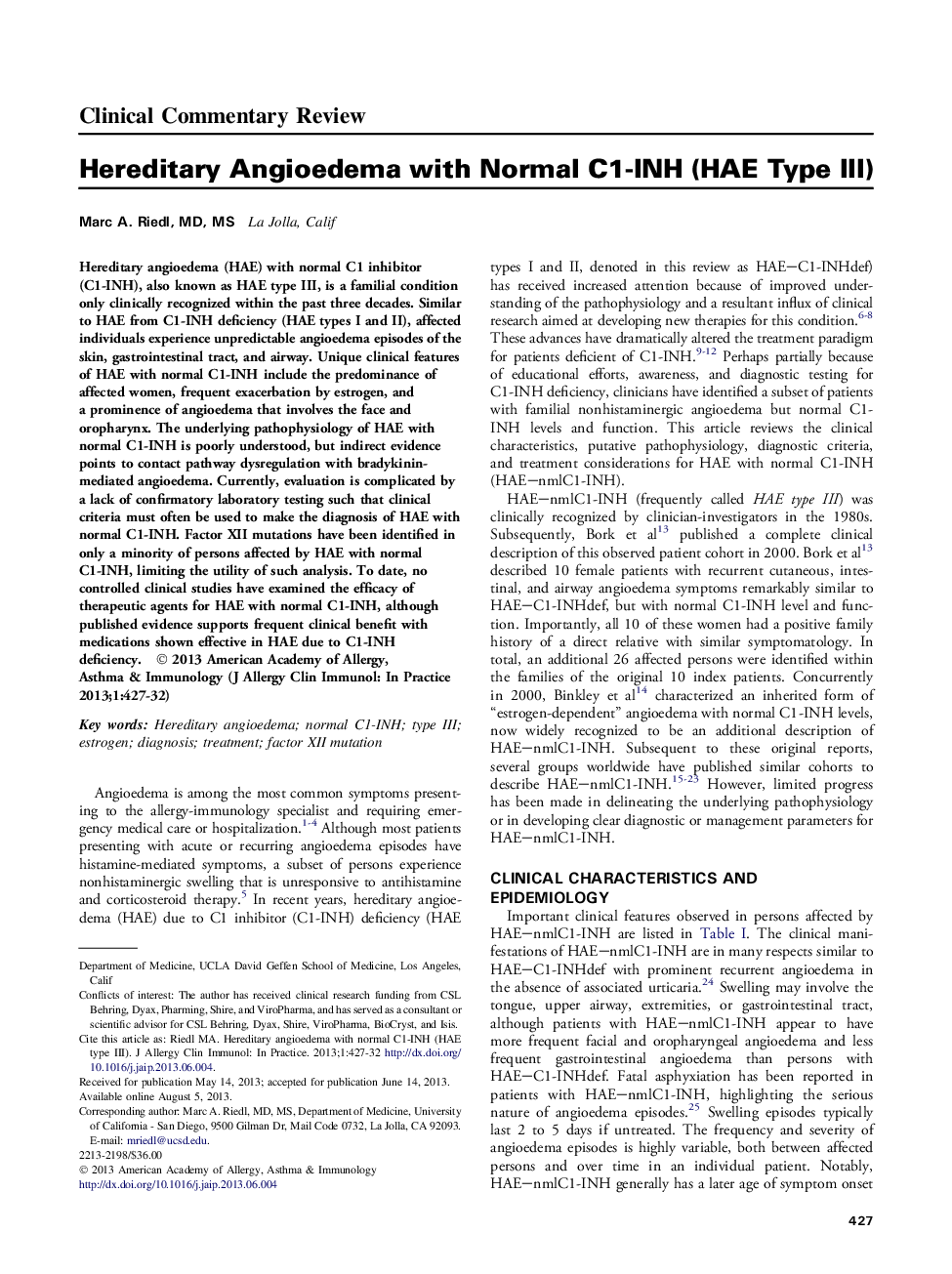| Article ID | Journal | Published Year | Pages | File Type |
|---|---|---|---|---|
| 3204261 | The Journal of Allergy and Clinical Immunology: In Practice | 2013 | 6 Pages |
Abstract
Hereditary angioedema (HAE) with normal C1 inhibitor (C1-INH), also known as HAE type III, is a familial condition only clinically recognized within the past three decades. Similar to HAE from C1-INH deficiency (HAE types I and II), affected individuals experience unpredictable angioedema episodes of the skin, gastrointestinal tract, and airway. Unique clinical features of HAE with normal C1-INH include the predominance of affected women, frequent exacerbation by estrogen, and a prominence of angioedema that involves the face and oropharynx. The underlying pathophysiology of HAE with normal C1-INH is poorly understood, but indirect evidence points to contact pathway dysregulation with bradykinin-mediated angioedema. Currently, evaluation is complicated by a lack of confirmatory laboratory testing such that clinical criteria must often be used to make the diagnosis of HAE with normal C1-INH. Factor XII mutations have been identified in only a minority of persons affected by HAE with normal C1-INH, limiting the utility of such analysis. To date, no controlled clinical studies have examined the efficacy of therapeutic agents for HAE with normal C1-INH, although published evidence supports frequent clinical benefit with medications shown effective in HAE due to C1-INH deficiency.
Keywords
Related Topics
Life Sciences
Immunology and Microbiology
Immunology
Authors
Marc A. MD, MS,
